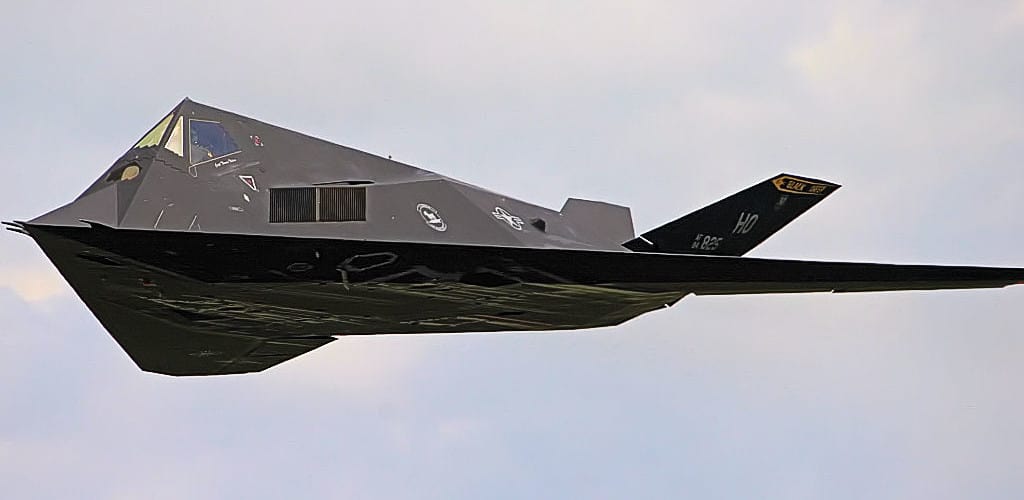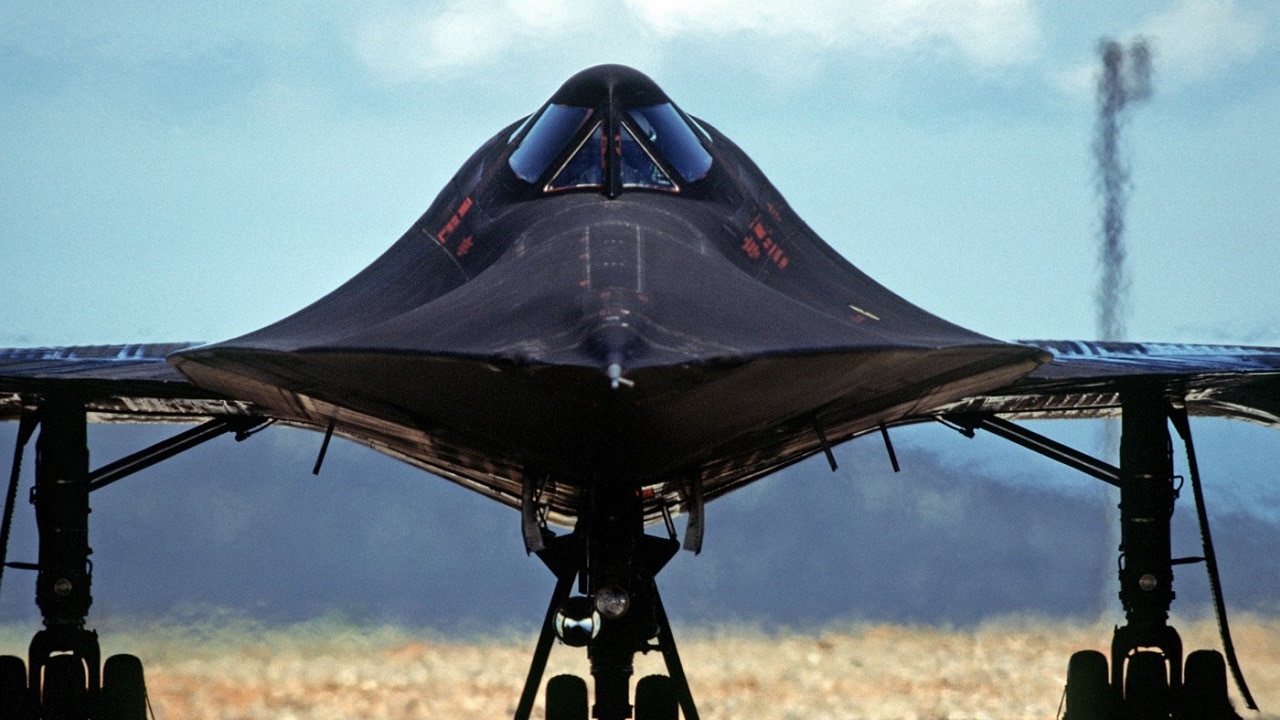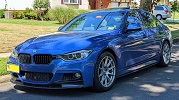
 |
|
| 05-02-2023, 01:59 PM | #1256 |
|
Fleet Mechanic
13006
Rep 1,960
Posts Drives: E86 3.0si Join Date: Oct 2011
Location: Susquehanna Valley
iTrader: (0)
Garage List '19 VW Golf R [10.00]
'55 Ford F100 [0.00] '08 Z4 3.0SI [8.50] '66 Triumph TR4A [0.00] '85 Corvette [0.00] '64 Corvette [0.00] '68 Triumph GT6 [9.50] |
.
|
|
Appreciate
7
Llarry21304.00 Jbrown74032900.50 Lady Jane81355.00 vreihen1620338.50 3.0L10738.00 M-technik-32415.00 BMWGUYinCO4323.00 |
| 05-02-2023, 05:22 PM | #1258 |
|
Cailín gan eagla.

81355
Rep 1,048
Posts |
Early Russian GPS.
 |
|
Appreciate
7
Llarry21304.00 Jbrown74032900.50 3.0L10738.00 JJ 911SC26478.00 vreihen1620338.50 BMWGUYinCO4323.00 kscarrol9522.50 |
| 05-02-2023, 07:09 PM | #1260 | |
|
Colonel
 10738
Rep 2,011
Posts |
Quote:
And what is it with the Russians painting aircraft interiors puke green. 
__________________
2014 BMW M235i
2024 Mercedes Benz GLC300 Expert ultracrepidarian |
|
|
Appreciate
0
|
| 05-02-2023, 07:26 PM | #1262 |
|
Cailín gan eagla.

81355
Rep 1,048
Posts |
|
|
Appreciate
4
|
| 05-03-2023, 07:44 AM | #1263 |
|
Cailín gan eagla.

81355
Rep 1,048
Posts |
Phew...!That was close!
 |
|
Appreciate
9
Llarry21304.00 vreihen1620338.50 3798j13006.00 3.0L10738.00 JJ 911SC26478.00 ezaircon4jc5344.50 Jbrown74032900.50 kscarrol9522.50 dradernh4827.50 |
| 05-03-2023, 03:15 PM | #1265 |
|
¯\_(ツ)_/¯

959
Rep 1,768
Posts |
Mine...
 
__________________
Tensioner/belt DIY | Side skirt extension DIY
 Apex SM-10/DWS06+ | 400m/X-ice Xi3 | Injen Exhaust | Stoptech SS Lines | 335 Front Brakes Hawk HPS 5.0 | RBF600 | ER Charge Pipes | Wagner Evo Comp 2 FMIC |
|
Appreciate
6
|
| 05-04-2023, 11:54 AM | #1266 |
|
Cailín gan eagla.

81355
Rep 1,048
Posts |
|
|
Appreciate
4
|
| 05-04-2023, 03:14 PM | #1268 | |
|
Major General
  
5345
Rep 5,672
Posts |
Quote:
   |
|
| 05-05-2023, 06:17 PM | #1270 |
|
Lieutenant Colonel
 2415
Rep 1,619
Posts |
|
|
Appreciate
4
|
| 05-06-2023, 03:52 AM | #1271 |
|
Curently BMWless
21304
Rep 716
Posts |
Early U.S. military helicopters:
The Sikorsky R-4 was the world's first successful production helicopter. It first flew in 1942. It was powered by a 200 hp radial engine and had two seats; as with all the early helos, payload capacity was limited. Igor Sikorsky had emigrated from Ukraine in 1919 and founded an aviation company in 1923; he'd been working on both fixed-wing aircraft and helicopters quite a while before coming up with the R-4. Sikorsky followed up with the R-5 (and the designation R for Rotary became H for Helicopter in 1948.) The R-5 had over double the power with a 450 hp engine. The now H-5 saw service in the Korean war, with Navy and Marine Corps HO3Ss being used for search and rescue and evacuation of wounded. Another early helo was the Bell Model 47, designated OH-13 by the Army and HTL by the Navy. The H-13 was also used for the evacuation of wounded soldiers in Korea and was a massive commercial success as well, getting Bell off to an excellent start in the rotary-wing field. Another helicopter pioneer was Piasecki Aviation, which concentrated on tandem-rotor designs. Their H-25 (or Navy HUP), which first flew in 1948, was the first to find considerable success and became the standard search and rescue helicopter for the Navy both on aircraft carriers and ashore until replaced with turbine-powered helos in the early 1960s. A competitor to the Bell OH-13 was the Hiller OH-23, of similar size and layout. Sikorsky was not idle; their H-19 (Navy HO4S/Marine HRS) was a big seller to all the services and many other nations. It was not only a troop transport for the Army and Marines but was the first practical anti-submarine helicopter for the Navy and was used by the Air Force for search and rescue. It also set the pattern (engine in front, pilots seated above the cabin) for its successor. Piasecki continued to develop the tandem rotor design; the H-21 had more power and more payload. It was used by the Army and Air Force and saw service in the Vietnam war before being replaced by turbine-powered designs. Piasecki became Vertol and then was bought by Boeing to become the Boeing Vertol that still produces the CH-47 today. A newcomer, Kaman, had a different approach and used intermeshing rotor blades; the Marines bought the HOK and the Air Force bought the H-43. Later USAF variants had gas turbine engines and were used for search and rescue in Vietnam, but that is beyond the timeline I am addressing here. Building on the success of the H-19, Sikorsky developed an improved version, the H-34 which also had a front engine and pilots above the cabin. The CH-34 became a workhorse for the Army and the similar UH-34 was used by the Marines for troop transport. The Navy also adopted the design for carrier-based ASW and the resulting HSS was a major step forward; later designs even had an autopilot that would maintain a hover just above the sea surface to facilitate dipping a sonar transducer for submarine detection. The H-34 was also notable in that it became the first helo for presidential travel. Inevitably, the armed forces wanted more; they were looking for a heavy-lift solution for combat transport. Sikorsky obliged with the H-37, which featured twin 1,900 hp engines in pods on either side of the fuselage. Both the Army and Marines bought the H-37 and the powertrain arrangement is related to that of the turbine-powered CH-53 that serves the Marines to this day.
__________________
'25 M850ix GC (Ordered)
BMW CCA 30 years |
|
Appreciate
5
|
| 05-06-2023, 09:24 PM | #1272 |
|
Curently BMWless
21304
Rep 716
Posts |
Addendum to my post on U.S. military helicopters; here is a photo of the first Marine One that transported the president of the U.S. For the first few years, the Army and the Marine Corps shared that duty. When the turbine-powered VH-3 came along, it was a Navy helicopter, so apparently the decision was made to have the Marines take over sole responsibility for transporting the president.
Before 1962, this helo was designated HUS-1Z: H - helicopter U - utility S - Sikorsky 1 - first model Z - VIP configuration After 1962 it became the VH-34D, but the replacement was imminent.
__________________
'25 M850ix GC (Ordered)
BMW CCA 30 years |
|
Appreciate
1
BMWGUYinCO4323.00 |
| 05-07-2023, 03:39 AM | #1273 |
|
Curently BMWless
21304
Rep 716
Posts |
A short history of U.S. Navy airships...
There were a number of blimps bought by the Navy from 1915-on. The early airships used hydrogen gas for lift, but this was a dangerous fire hazard. In 1921, U.S. Navy blimp C-7 became the first airship in the world to fly using helium gas and subsequently it was decreed that all airships would use safer helium. The Navy retired its C class blimps in 1922 and for the next decade-plus bought only small numbers of non-rigid airships. But what really caught the Navy's eye was the potential for the rigid airship, such as the Zeppelins that Germany had used to bomb England during World War I. The first USN rigid airship, USS Shenandoah (ZR-1) was designed by the Navy and built at the Naval Aircraft Factory in Philadelphia and assembled at Lakehurst, New Jersey, in 1923. ZR-1 was 680 feet long and had a volume of 2,115,000 cubic feet. It was powered by six 300 hp Packard engines and had a top speed of 60 mph. During its short two-year life, it was mostly used for test work. One of the problems with helium was that the Navy did not have enough of the gas; Once the second airship was delivered, there was only enough helium for one to operate at a time. The U.S. had been allocated two Zeppelins in the armistice, but the German ships had been sabotaged by the crews at war's end, so it was decided that the Zeppelin company would build one new ship for the U.S. Navy. This made a trans-Atlantic flight in 1924 using hydrogen and was delivered to the USN at Lakehurst. The Navy named the ship USS Los Angeles (ZR-3) and promptly replaced the hydrogen with safer helium. The Los Angeles operated safely for 8 years and was retired in 1932 and scrapped in 1939. The next rigids were authorized in 1926 and built by the Goodyear-Zeppelin Corp. These larger ships were designed from the start to use helium gas for lift. They were 785 feet long with a 6,500,00 cubic foot volume and a normal crew of 60. They were powered by 8 engines mounted internally, driving props through shafts. They were also provided with an airplane hangar to store fighters or scouts inside the ship. The first, USS Akron, was commissioned in 1931 and was stationed at Lakehurst. The Akron was lost at sea during a storm off the New Jersey coast in April 1933 with only three survivors. Among those lost was Rear Admiral William Moffett, Chief of the Navy's Bureau of Aeronautics. The Akron's sister ship, USS Macon (ZRS-5) was finished in June of 1935 and was assigned to a new airship station at Sunnyvale, California, which was named Moffett Field in honor of Admiral Moffett. Like her sister, the Macon was lost off the coast after just two years, although with minimal loss of life. Thus ended the U.S. Navy's rigid airship program. The Navy continued to buy and operate blimps through the 1920s and 1930s, but in small numbers. The K series blimps were the first class to be used in quantity. The K-1 was a prototype, but the K-2 was the largest blimp ever built at the time of its completion in 1938 at 251 feet long and 404,000 cubic feet volume. There were a total of 134 K series blimps completed by the end of World War II. They were used extensively for ASW patrols, but their record in that regard is mixed. Although they could no doubt spot German submarines and inform surface ships, they did not actually sink a U-boat during the war and in 1943, K-74 was shot down by a U-boat off the Florida coast. The last of the K-series was retired in 1953. By 1944, the Atlantic ASW situation had improved and only 4 improved M-series blimps were built. These were larger still at 310 feet long and 625,000 cubic feet. The last were retired in 1956. The N series had a double-decked car. With a volume of 875,000 cubic feet, it continued the trend to larger size. Delivered in 1951, it had a speed of 90 mph. Eleven of these were delivered. The final Navy blimps were designed for airborne early warning to supplement the radar-equipped ships and aircraft designed to warn of Soviet attack. The final four blimps, designated ZPG-3W, and delivered in 1958, were the largest of all with a length of over 400 feet and a volume of 1,516,000 cubic feet; the large AEW radar antennas were installed inside the envelope of the blimp. In 1962, the Navy abruptly pulled the plug on the lighter-than-air program and retired all blimps and units. The judgement of the Navy's leadership was that the program was not worth the expense; a wise call in my opinion.
__________________
'25 M850ix GC (Ordered)
BMW CCA 30 years Last edited by Llarry; 05-07-2023 at 08:56 AM.. |
|
Appreciate
4
|
| 05-07-2023, 04:59 AM | #1274 |
|
Curently BMWless
21304
Rep 716
Posts |
One more interesting photo of the USS Los Angeles (ZR-3) from August of 1927. The airship was at her mooring mast when a gust of wind caught her and pushed the tail up into colder air just above. The Los Angeles stood on her head with a 85 degree tilt. I'm sure any crew members were surprised to say the least. No damage was done and the airship flew the next day.
__________________
'25 M850ix GC (Ordered)
BMW CCA 30 years |
|
Appreciate
6
|
| 05-07-2023, 08:25 AM | #1276 | |
|
Curently BMWless
21304
Rep 716
Posts |
Quote:
That support for the radome is about right where the important airbrake is... hmmm... The shark on the vertical stabilizer says it's a navy airplane... double hmmm... EDIT: Having considered this a while, I'm calling BS on the Flanker with an AEW-like radome. Photoshop? Disinformation? Joke? I don't know but the radome is too close to the vertical stabilizers.
__________________
'25 M850ix GC (Ordered)
BMW CCA 30 years Last edited by Llarry; 05-07-2023 at 05:24 PM.. |
|
|
Appreciate
1
vreihen1620338.50 |
Post Reply |
| Bookmarks |
|
|